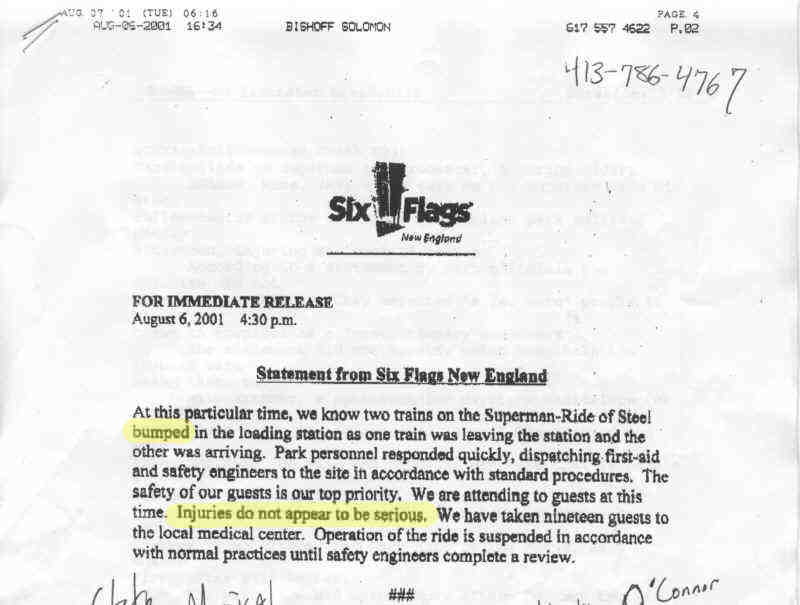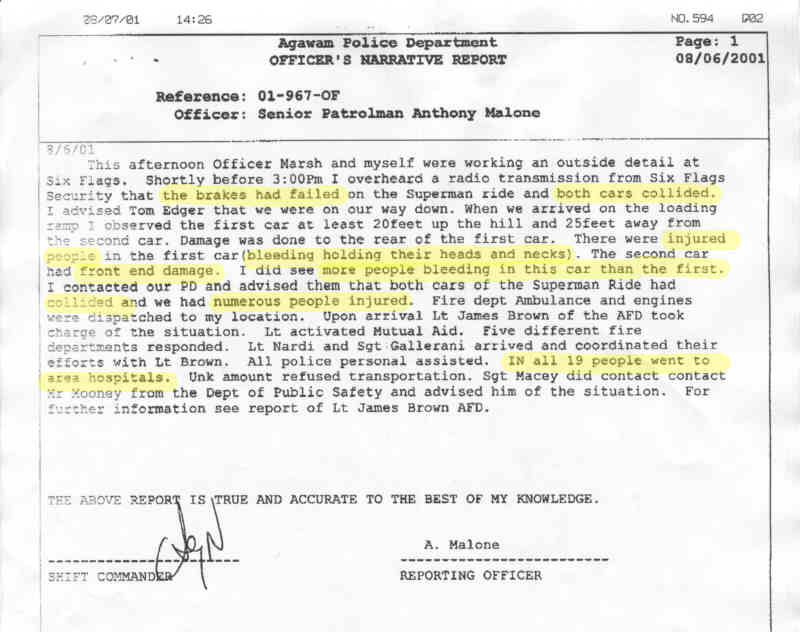
Six Flags Roller Coaster Accident
Ben Dobson
On Monday, August 6, there was a mishap at the Six Flags New England's "Superman Ride of Steel." To start, if you are unfamiliar with this story, check out this link to get some wire copy with a summary of what happened that afternoon.
Now, check out the press release that Six Flags released to the media that afternoon. It was most likely written by an attorney.

The following day, Six Flag's follow-up release offered up this information:
| "This is an exceptional ride. What happened yesterday was highly unusual. We regret the inconvenience to our guests. Right now safety experts as well as safety engineers from the ride manufacturer are ... conducting a thoughtful and thorough review. The ride will open only after safety experts are completely satisfied with their review and certify it for operation. While we expect the ride to reopen shortly, at this point we are focused entirely upon the review process." |
Notice the language in the reports: The coaster apparently "bumped" into another at the loading station, and that "injuries do not appear to be serious." Or that it was a "inconvenience" to the guests.
That is in stark contrast with what a police report from the Agawam Police Department showed:

Notice the stark difference in terms of what was reported. Unfortunately, police reports are filed well after the initial accident. What Six Flags did was acknowledge an accident, so that any national news organizations that received it could report what Six Flags wanted the public to know. The police report, available the following day, was simply an after-thought for most except for the immediate local media (ie: me).
There was some justice. Certain news stations with helicopters flew over the scene and showed the roller coasters where they had collided. That same station (WHDH-TV) also found home-video footage of passengers immediately after the collision giving everyone first-hand a first-hand account to the scene.
But that is where the coverage ends. The park shuts off its access to the media. Suddenly, its "media relations" lines are "broken" or "temporarily unavailable." They quickly have remaining passengers sign waivers saying that they were unharmed by the accident. Since no one at the park will go on camera, and the injuries are not life-threatening, the media shifts its attention to more pressing matters (in the case of that week, Massachusetts was underoing record-breaking heat). Within 24 hours of the initial accident, there was little trace that the accident had ever occured.
To further demonstrate the control the corporation kept over the situation, consider this excerpt from the Hartford Courant's 8-8-01 edition:
| Six Flags said its staff and engineers from Intamin A.G., Superman's Swiss manufacturer, would examine the ride Tuesday. But Six Flags would not answer questions about the inspection, and declined to publicly provide mechanical specifications of Superman's braking system. Messages left with the Maryland office of Intamin A.G. were not returned Tuesday. |
Form your own opinion about what went on at Six Flags that afternoon. But regardless of the conclusion you draw, the one truth from this is that this sort of corporate image-media control is an integral part of most big businesses, and the techniques used are continuing to improve.